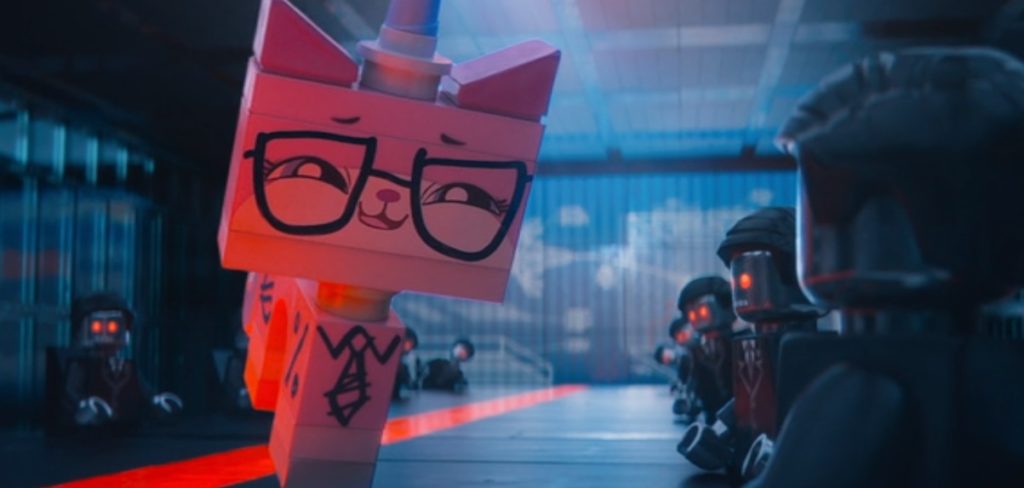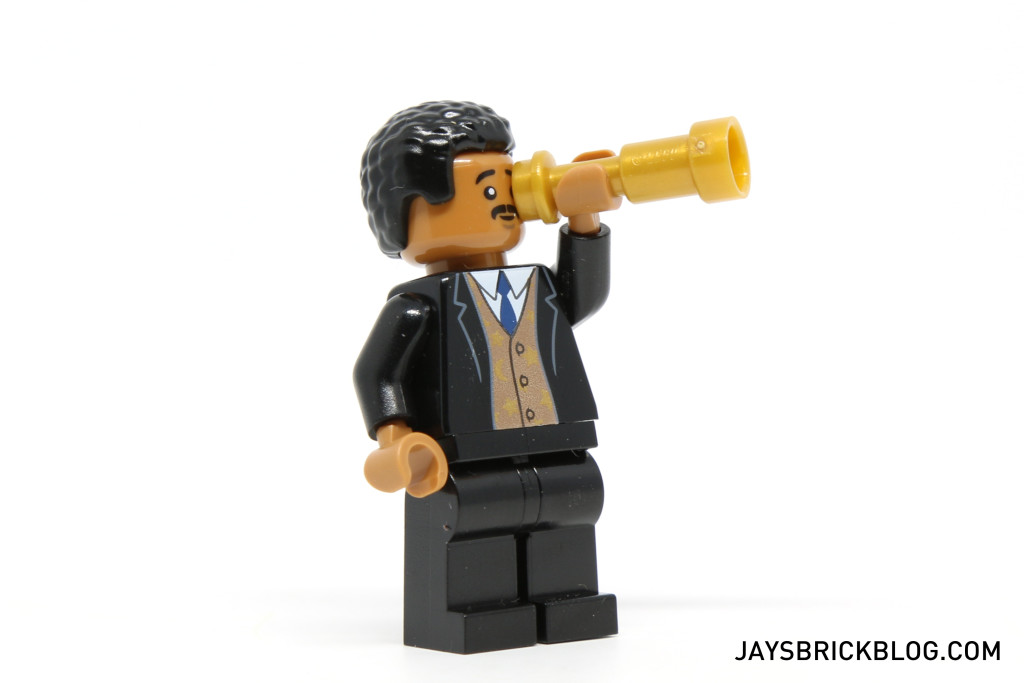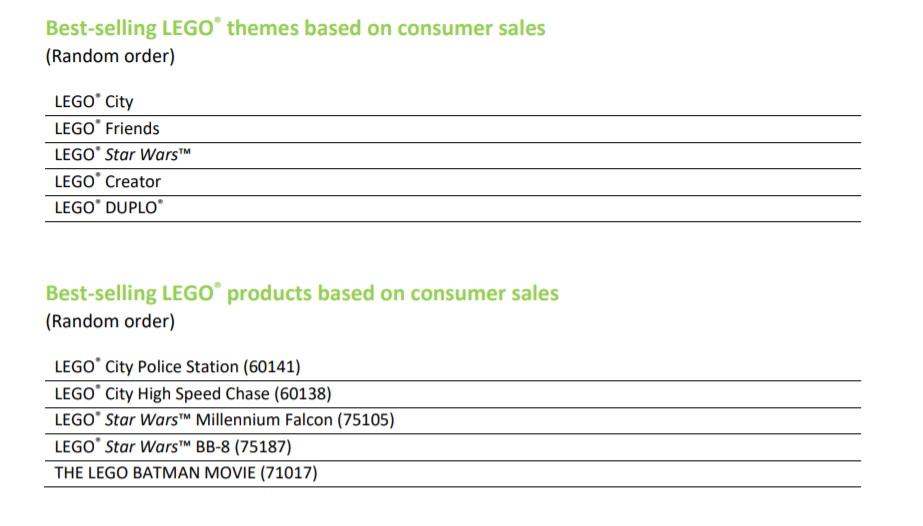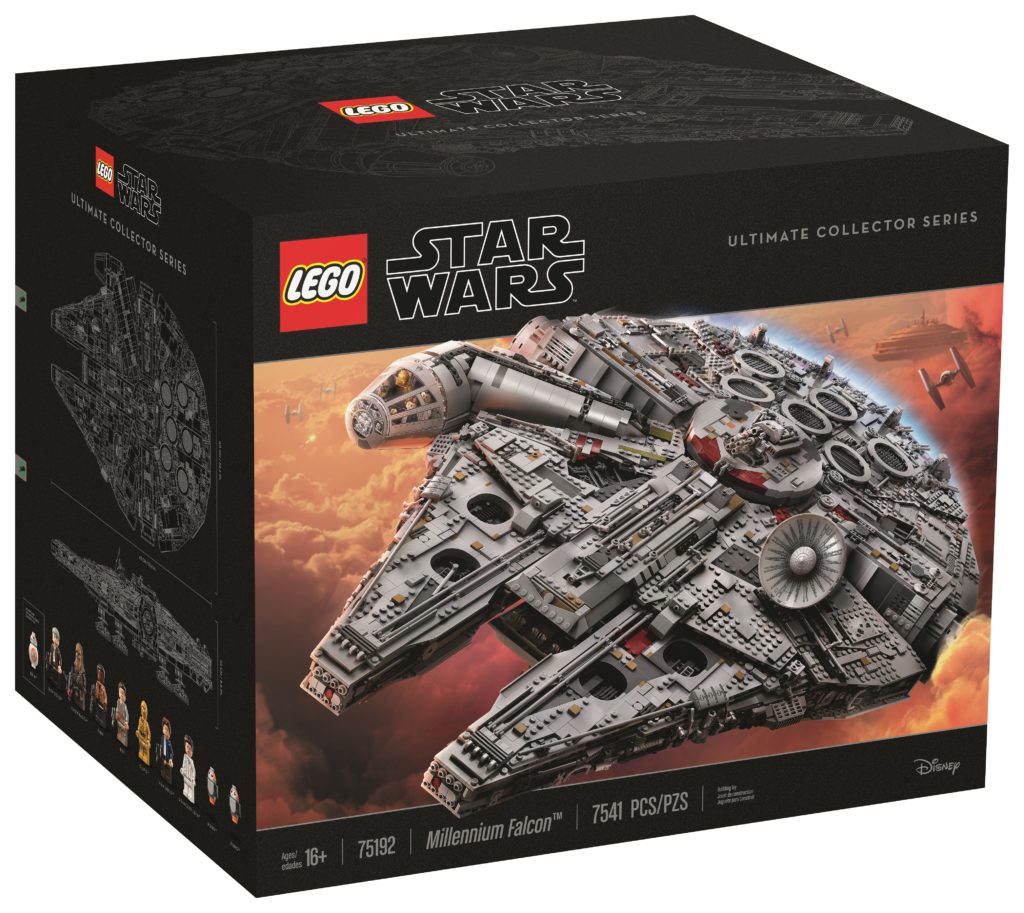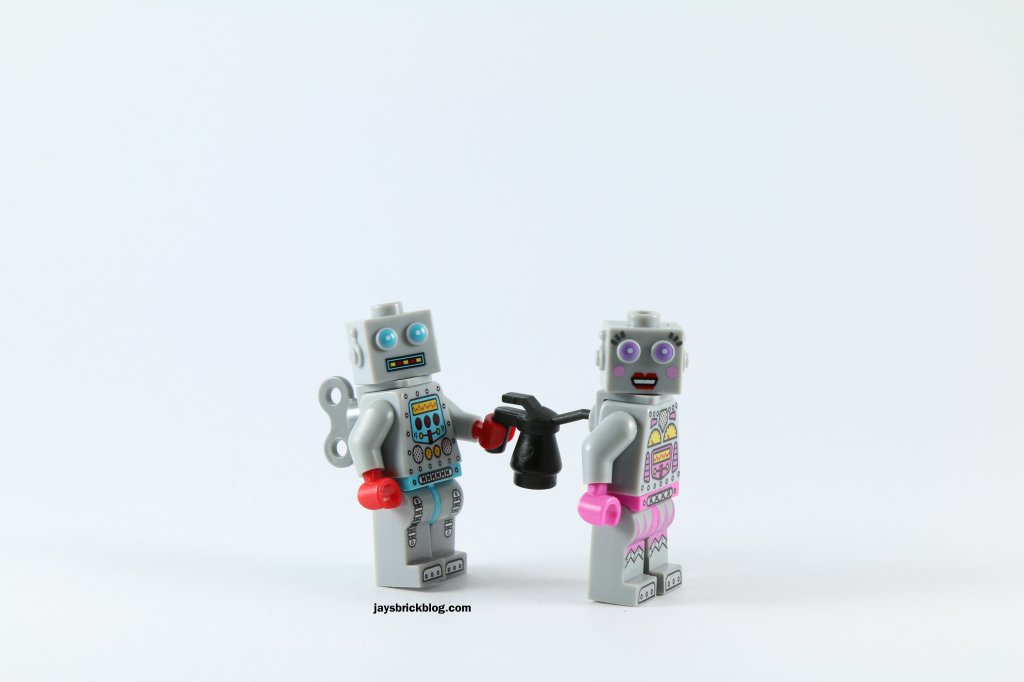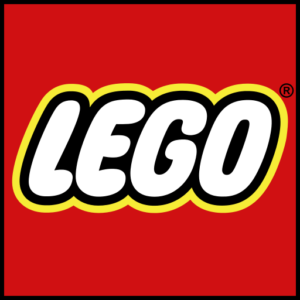Editorial: LEGO’s Annual Report 2017 – What is LEGO doing wrong?
 48
48
Last week, LEGO released its 2017 Annual Report and the numbers weren’t pretty. You may have seen the doom & gloom headlines in the news and on other LEGO sites, but here are my thoughts on LEGO’s situation.
Here’s the summary on the 2017 financial results from LEGO:
- Revenue for the full year decreased by 8 percent to DKK 35.0 billion ($5.8bn) compared with DKK 37.9 billion in 2016. Excluding the impact of foreign currency exchange, revenue for the full year declined 7 percent compared with 2016.
- Operating profit (profit before financial items and tax) for 2017 was DKK 10.4 billion compared with DKK 12.4 billion for 2016, a decrease of 17 percent year on year.
- Net profit for the full year was DKK 7.8 billion compared with DKK 9.4 billion in 2016.
- Cash flow from operating activities for the year was DKK 10.7 billion compared with DKK 9.1 billion in 2016.
- Decline in revenue was driven in part by clean-up of inventories across the value chain. Global consumer sales were flat and trended upwards in the final months of 2017.
It’s important to have this perspective: The numbers look bad, but they’re not terrible. I think it’s really important to remind everyone that The LEGO Group is still wildly profitable – just not as profitable as previous years.
They still managed a 7.8 billion DKK profit, which roughly equates to about 1.2 billion USD which is not insignificant at all. Many global companies would kill for a billion dollars in net profit.
The issue is that this is the first time in 13 years that profits and sales had fallen, which is the troubling statistic.
Why?
Declining revenues were mostly attributed to “cleaning up inventories” and sluggish sales in Europe, and North America, two of LEGO’s most important markets. This is in stark contrast to 2016, where only North American markets registered a decline, signalling that LEGO’s lethargy is starting to spread worldwide.
LEGO has also attributed this to there being too many bricks in circulation and it was forced to sell off excess stock cheaply. I don’t really have a detailed understanding of LEGO’s inner workings, but my assumption is that toy stores haven’t been able to sell all the LEGO they ordered, which means that LEGO had to take back much of its excess stock that’s currently sitting in warehouses and shops.
In a nutshell, outside of China which saw positive growth, people all over the world were buying less LEGO in 2017 than the company had forecasted.
Did anyone see this coming?
Sorta. If you had been observant enough of decisions that LEGO have been making and have not just blindly consumed positive spin and manufactured excitement from sources too afraid to level criticism at LEGO’s (sometimes) baffling decisions, then no, the news of declining interest in LEGO probably won’t have caught you by surprise.
If you also had engaged in conversations with a wide spectrum of LEGO fans (read: not just AFOLs) and have kept your ears to the ground, then you could probably have also picked up the general public’s declining sentiment on things LEGO designs and pricing.
Here are some lines from my Annual Report 2016 opinion piece:
- I have a theory that LEGO poured an insane amount of money into Nexo Knights, their “big bang” theme in 2016, with apps, animated shows and a huge retail presence, but the theme has failed to capture the imagination of LEGO’s core audience of kids.
- It’ll be interesting to see how LEGO copes this year, especially with a lot of price increases on LEGO sets which may dampen the ability of fans to buy as much as they previously could have. I know, my LEGO purchasing has slowed down slightly because I don’t see a lot of great value sets on the market.
- So yeah, I think LEGO have quite a challenging year with 2017. Obviously The LEGO Batman Movie and Ninjago Movie will give them a huge boost, and we have Star Wars Episode VIII sets to look forward to as well.
- I would really like to see LEGO try and arrest some of the rising prices of its sets, which I think may be quite prohibitive especially for families and parents that don’t have a huge budget to spend on toys.
- It’s a delicate balancing act for them (LEGO) – they can’t really cut prices as it might affect people’s perceptions of LEGO as a premium toy. Same reason why Apple never discounts their phone. What they can do, is stuff more value into sets, so you get a lot more than what you pay for.
I don’t normally subscribe to the notion that LEGO is expensive, but 2017 has really made me rethink my position. It’s not that I think that LEGO sets are unaffordable in general, I just feel like there’s been a steep reduction in value across the board.
I (and most parents) won’t mind dropping a hundred dollars on a set, but when the value of what you’re getting (elements, design, playability, replayability) doesn’t match up to the sticker price, it’s really obvious that consumers are going to pull back.
What is LEGO doing wrong?
Most of Niels Christiansen’s (LEGO’s new CEO) comments have been focused on focusing on long-term growth, and making the organisation more efficient, reducing overlap and trying to curb some of the bloat generated from LEGO’s recent blockbuster years (2013 – 2015).
He has also flagged a “focus on innovation, growth in established markets and its commitment to global expansion, such as expanding its presence in China.” as key battlegrounds in 2018 to get back to single-digit growth.
I believe that those moves will eventuate in operational efficiency (dude is a McKinsey consultant like ex-CEO and current chairman Jorgen Vig Knudstorp) but it remains to be seen if he has the vision to steer LEGO through a rapidly changing world, where the notion of play is being redefined.
If you ask me, I share the opinion of most news outlets, that there is simply too much LEGO on the market. It’s funny, because it seems like the entire organisation has forgotten about the oft-quoted chapter in the company’s history about having out-of-control product lines.
LEGO’s entire catalogue in 2017 was just out of control. There were simply too many sets and themes on the market. We see the effect of LEGO curbing some of that by axing the Nexo Knights and DC Super Hero Girls themes recently, but I still feel that existing themes have too many sets in them.
Spreading themselves too thin.
What I would really like to see and would reinvigorate interest in LEGO is a focus on only putting out great sets, at every pricepoint, instead of the spray and pray approach they have right now.
If they could only apply the company mantra of “only the best is good enough” to the sets that they release, maybe that would’ve prevented this dumpster fire of a set to ever see the light of day.
NB: Speaking of which, sets like 75201 First Order AT-ST really grind my gears and encapsulate everything that’s wrong with LEGO at the moment. At AU$90, I still think this is a sick joke from the LEGO Star Wars team and just represents how out of touch the company is with their fans and what consumers want.
I was toying with the idea of buying this set to lambast it in a review, but I couldn’t even bring myself to buy it at the price they expect me to pay for this literally half-assed set. Anyway, I digress.
I think LEGO fans and parents are tired of simple rehashes, and recolours and there is a really healthy appetite for sets that have great, interesting designs and sane price-points.
Again, I’m not calling for LEGO to slash the price of the sets, but to merely justify the asking price and deliver value equal to what we are asked to pay.
Over-reliance on licenses
This is kind of hypocritical coming from me as most of my reviews are licensed sets but LEGO needs to slow down their reliance on licensed sets. I also say this still being very excited for the return of LEGO Harry Potter this year.
If you look at the top-selling sets and themes of 2017, you can see that non-licensed themes still sell the lion’s share of LEGO, thought that isn’t reflected in the best-selling sets, where 3 out of 5 are licensed properties.
Look at what’s on the slate this year: Infinity War, Jurassic World, Harry Potter, Minecraft, Powerpuff Girls, Solo: A Star Wars Story, Disney Princess, and who knows what else that’s yet to be revealed, there’s just too many LEGO sets that are tied to movie or television properties.
Parents are probably wisening up to this as well, because there’s only so many things you can do with a LEGO X-Wing, and so many other alternate builds you can make from its parts – this really limits the utility of the set beyond just a movie-accurate construction toy.
One of the most-telling lines in the annual report, that even LEGO Star Wars is starting to lose its shine is:
Core product lines continue to do well, and among the topselling lines in 2017 were themes like LEGO® City, LEGO® NINJAGO®, LEGO Creator and LEGO® DUPLO®. LEGO® Star Wars performed in line with expectations.
The distinction and deliberate use of “performed in line with expectations” doesn’t really inspire confidence in me.
I’d like to see LEGO double down on innovation and designs on its core non-licensed themes. LEGO City really needs a refresh, or just a name-change to LEGO Police/Fire Vehicles.
This is what happens when you court AFOLs
The Brothers Brick came up with a stellar observation that truly shines a light of what LEGO is doing wrong. The top 11 largest LEGO sets of all time are currently available for purchase from LEGO.
If that doesn’t scream “our product roadmap and sales strategy is now heavily reliant on AFOLs”, I don’t know what is.
Buoyed by insale sales growth, and irresistible factor of the near limitless disposable income of adults, it seems like LEGO are slowly but surely forgetting to cater to their core audience and target market – children and parents who want to invest in great, long-lasting educational toys.
The fact that LEGO are throwing so much to cater towards the AFOL market is a huge mistake and a troubling sign of where the company is heading, a sentiment that I don’t think I’m alone in sharing.
I know for myself, what captivated me and fuelled my return to LEGO after my Dark Ages weren’t modular buildings, or UCS sets but a simple charming Creator Lighthouse set.
I believe that LEGO’s long term plan needs a correction of sorts so that catering towards AFOLs aren’t the main driving force behind LEGO’s product roadmap.
A lack of investment in innovation
I touched on this lightly in my Winners and Losers of 2017 but I feel that there is a dire lack of innovation and most importantly, investment in innovation at The LEGO Group. Hopefully that changes this year, and with news that we’ll be seeing a lot more Boost in sets this year, that has me slightly encouraged.
The news about LEGO using sustainable materials for their plant elements this year is also pretty cool and is definitely a step in the right direction.
I’d really love to see more innovation and risks from LEGO, as opposed to just re-releasing classics like the UCS Millennium Falcon or the Taj Mahal. The not-really Funko-Pop Brickheadz had a lot of potential, but it just got mired in the same old boring licenses and characters that LEGO already have and do well in.
I feel like LEGO kind of missed the programming and robotics boat, but it’s not too late to chase up to that.
Think about it, if they can release an affordable programming kit ala Boost or spread it out across multiple price categories, that itself would be a winner.
I think LEGO also needs to seriously invest in technology that will augment play experiences. Given the advancements in machine learning, and image recognition via AI, it boggles my mind that LEGO has not invested in this area.
Imagine this, an app that allows you to photograph every day items, scan and convert it to a buildable LEGO model and have an AI generate step by step building instructions. That would be such a fantastic learning tool and accompaniment to the tubs and tubs of LEGO that exist in most households.
Btw, to the boffins at LEGO looking for their next big idea, you’re welcome. You guys already have my address, so please make the royalty cheques out in the mail to me.
Design is at the core of LEGO as a company. There’s only so much you can do to squeeze efficiencies in the manufacturing and distribution process. Investing in the latter is great for your bottom line, but investing in groundbreaking design and innovation is what will truly yield long-term dividends for the brand.
Anyway, those are my thoughts as well as current frustrations with what LEGO is doing as a company. Again, it’s important to remember that it’s not all doom and gloom as LEGO are still wildly profitable.
That said, I do think that the 2017 Financial Results are a good wake up call for LEGO, to bring them down to Earth with the fact that they can’t coast along and expect fans and their core target audience to lap up everything that they do.
Ultimately for me, if LEGO can get the “value” of sets right and stop fans and customers from feeling that they’re being ripped off. I get that LEGO are a business, but there are ways that they can deliver value without cutting back on the contents within a LEGO box.
I really hope that we see a return to form for LEGO sets in the next few months. I would really like to see less LEGO sets to choose from, but a corresponding uptick in quality of sets on the market. I want to see a design philosophy that is more Saturn V, and less First Order AT-ST.
There’s only so much money (and space) that fans can devote to sets, so I would rather LEGO make the purchases that I make count.
What do you think of LEGO’s 2017 financial results and where they’re headed as a company? Are there things that you wish LEGO would do better? Let me know your thoughts in the comments and as always, thanks for reading!






